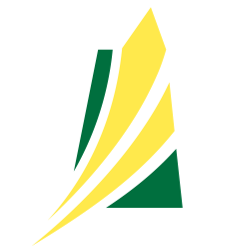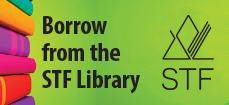Mechanical and Automotive 10, A20, B20, A30, B30
MECH19A
Module 19A: Multi-cylinder Engine Theory (Optional)
Outcome
Explain multi-cylinder engine construction and operation.
Indicators
| (a) | Explain the construction and function of major engine sub-assemblies (e.g., cooling, exhaust, lubrication systems) in multi-cylinder engines. |
| (b) | Differentiate between common automotive engine configurations (e.g., inline, V-type and opposed). |
| (c) | Differentiate between common automotive valve train configurations (e.g., cam in block, single overhead camshaft and dual overhead camshaft) in multi-cylinder engines. |
| (d) | Describe how the events of combustion change with different fuel sources (e.g., diesel, varying octane gasoline and compressed natural gas [CNG]). |
| (e) | Compare the air flow of naturally aspirated and forced air (e.g., supercharged and turbocharged) engines. |
| (f) | Explain the purpose and operation of internal engine components (e.g., camshaft, crankshaft and pistons) and variations (e.g., cam lift, piston shape and ring design) of each component. |
| (g) | Define and determine engine measurements such as displacement, compression ratio and clearance. |
Loading...


R010007
Auto Fundamentals(12th ed.)
This textbook provides the fundamental theory behind most of the mechanical and automotive concepts identified in the modules of the curriculum. The resource has 29 chapters with clearly identified objectives supported by text, diagrams and photographs. Each chapter ends with a chapter summary, a list of technical terms, review questions and critical thinking questions. An index and glossary are included at the end of the resource as well as reference charts and tables. There are other components of this resource available such as a workbook and the correlating online subscription to the teacher and student resources.
(More information)

R009844
Automotive Engines: Theory and Servicing(9th ed.)
This textbook uses concise language and clear diagrams and photographs to explain the theory and servicing concepts highlighted in the 35 chapters. Each chapter contains tech tips, safety tips, case studies, FAQs, notes, cautions, warnings and step-by-step engine repair procedures.

R037818
Modern Automotive Technology(9th ed.)
This textbook explores a wide range of information about modern automotive technology and is written in accessible language for high school students. The resource has 87 chapters that incorporate most of the course modules. Clear diagrams and graphics appear throughout the resource and a glossary of terms, reference charts and tables are included at the end. Every chapter contains tech tips, safety and service procedure reminders, suggested activities and review questions. This resource is available in both print and digital formats.
(More information)
•
Modern Automotive Technology. Instructor's Resource CD

R010086
Motorcycles. Fundamentals, Service, Repair(4th ed.)
This is a comprehensive textbook about the fundamentals of motorcycle service and repair. The information is divided into 24 chapters with photographs and graphics that support the text. The resource includes a summary, review questions and suggested activities that could be performed in the shop/lab environment. There is also a glossary of terms, conversion and diagnostic charts and an index.
•
Motorcycles. Lab Workbook: Fundamentals, Service, Repair

R013273
Auto Engine Performance and Driveability(5th ed.)
This textbook supports the modules specific to engine performance and driveability. The images and diagrams give visual support to the text. The 22 chapters include a summary and review questions. The resource also features a comprehensive glossary, useful tables to reference and an index. The digital version of this resources is available through a subscription. Other components of this series include a companion student workbook and shop manual.
•
Auto Engine Performance and Driveability. Shop Manual: Job Sheets for Performance-based Learning

R013281
Auto Engine Repair(7th ed.)
This textbook focuses on engine diagnosis, service and repair of late-model engines and related systems. There are 26 chapters that introduce the concepts, provides technical terms, safety alerts, summaries and review questions. Illustrations accompany the text throughout the resource. A glossary of terms and an index are also included.
•
Auto Engine Repair. Shop Manual: Job Sheets for Performance-Based Learning
•
Auto Engine Repair. Workbook

R009841
Advanced Engine Performance Diagnosis(7th ed.)
This resource is comprised of 29 chapters that address diagnosis and troubleshooting of automotive engine control systems. It provides information on digital storage, oscilloscopes, fuel injection and ignition system diagnosis, five-gas exhaust analysis, emission testing and more. Some of the features include full colour photographs and diagrams, useful Tech Tips, and warnings for safety and proper procedures. Every chapter ends with a summary, review questions and a quiz.

R009940
Today's Technician. Manual Transmissions and Transaxles. Classroom Manual(7th ed.)
This resource provides information about the theory behind manual transmissions and transaxles. It contains 11 chapters that provide photographs and illustration for visual support of the concepts presented. The chapters end with a summary and review questions.
•
Today's Technician. Manual Transmissions and Transaxles. Shop Manual

R104343
Electude
This online resource is a collection of units about different automotive components. The site is organized by topics that provide information, interactive review questions and animated or interactive visuals. The site also has quizzes related to the content of each unit.
Links :
Click here
Media and Formats :
Website
Price :
See publisher.
Record posted/updated:
June 16, 2022

R012423
Auto Engine Performance and Driveability. Workbook(5th ed.)
This workbook accompanies the textbook by the same name. It follows the same sequence of the chapters and contains review questions.

R009855
Automotive Technology. Principles, Diagnosis, and Service(6th ed.)
This comprehensive textbook is theory-based and focuses on the fundamentals of automotive technology. Each chapter outlines objectives, key terms and includes step-by-step photographs of some operations, review questions and a chapter quiz.

R024931
Automotive Technology: A Systems Approach(4th Canadian ed.)
This textbook is written at an appropriate level for high school students. Each chapter includes learning outcomes, warnings and cautions, service information, shop and performance tips, photo sequences of procedures, key terms, a chapter summary and review questions.


